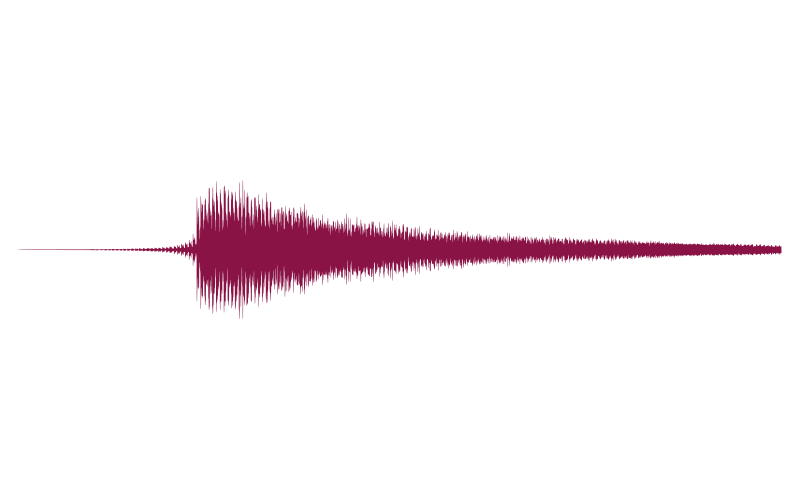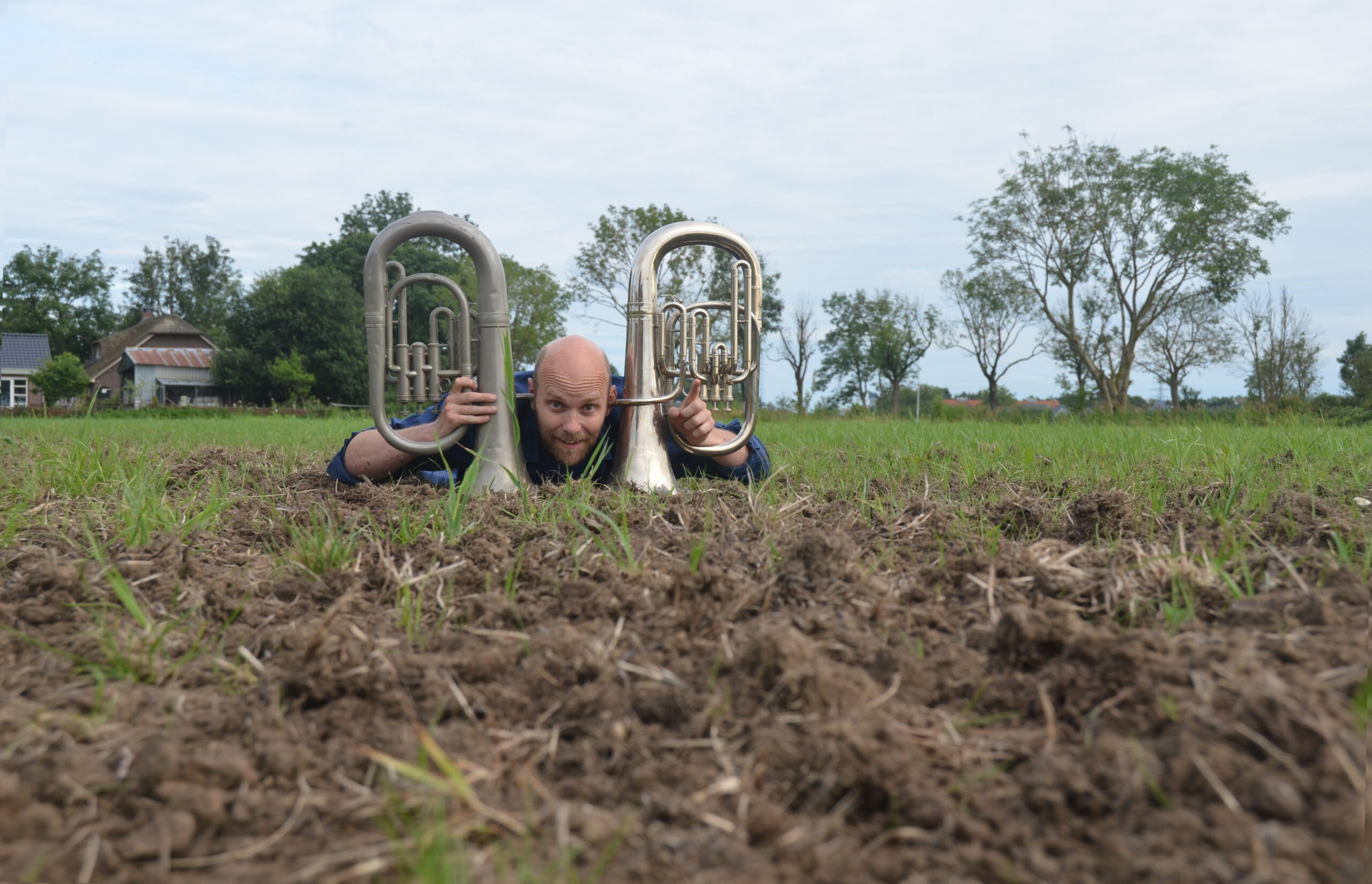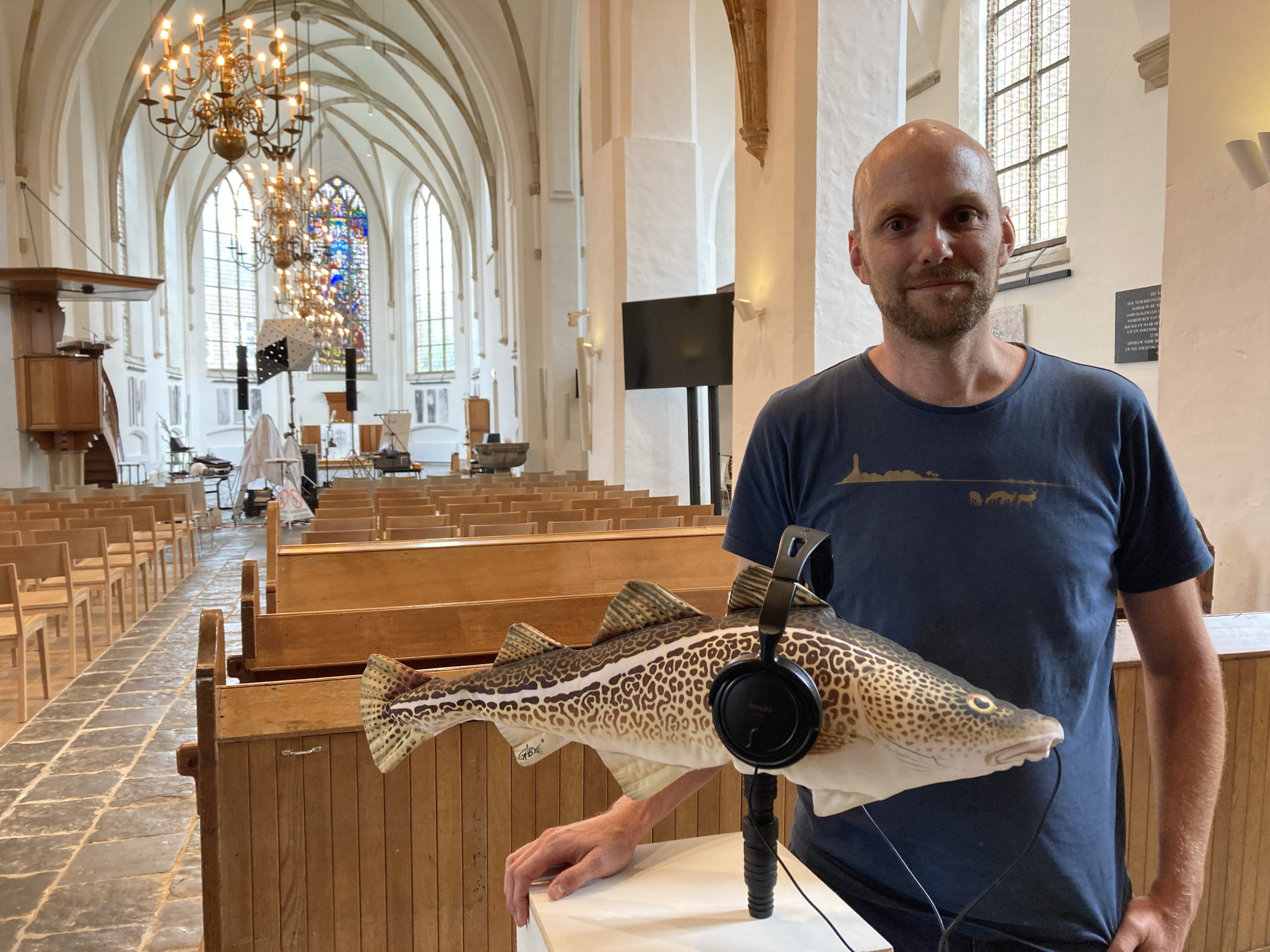Sound artist and WUR’s artist in residence Remco de Kluizenaar has spent many months exploring the protein transition. He interviewed experts, visited their labs and investigated the sounds made by materials and machines. He compiled all these impressions into a campus audio tour which, in his own words, ‘gives your ears a glimpse’ of WUR’s work on the protein transition. The tour is available from today. A report in soundbites.
Duckweed protein
The beat is fast and the background chorus invigorating. After a few seconds you hear a roaring voiceover: ‘Rrrrrubisco – for 350 million years the vegetable protein that has provided you, as a land animal, with all your essential amino acids!’ Near the Forum, the audio tour has you listening in to a conversation with researcher Ingrid van der Meer about the potential of water lentils (duckweed) as a new, sustainable source of protein, until De Kluizenaar pauses the conversation to express his admiration for the rubisco protein. He thought such a promising ingredient deserved its own jingle, so he went into action. The result is a ditty that settles firmly on your eardrums – the ‘Rubiscohooo!’ jingle is a first-class earworm.
Sounds from the lab
Everywhere the audio tour takes you, you hear sounds being used by the sound artist to illustrate key concepts from protein science. An abstract concept such as ‘exponential growth’, for example, is brought to life in a self-replicating series of bleeps, buzzes and other sounds from the lab. Those familiar with them may recognize the sound of a pipette machine and a 3D food printer, among other things.
Missionary zeal
Will we manage to save the world? How can we feed the growing number of people on this planet with our limited food supply? Resource is reminded of the Biblical story of the five loaves and two fishes that fed 5000 people. The protein transition sometimes evokes religious associations for De Kluizenaar too. He confesses, for example, to a missionary zeal for converting people to a new diet. In the audio tour, this is expressed in a Gregorian-sounding chant of ‘Et salvator mundi in transitione proteinum’, after which the artist invites you to walk with him on water – meaning over the Forum bridge.
The story of the oleosomes
One of the most intriguing sounds on the tour was given to De Kluizenaar after a sound competition was organized for protein scientists to generate material. In this case, the NMR resonance of hydrogen nuclei in a protein has been converted into sound using software. ‘The participants called the sound “the story of the oleosomes”, because the vibrations say something about the composition of the protein. Very poetic actually,’ says De Kluizenaar. He describes the sound as ‘inimitable, quite spacy and a bit creepy, and impossible to reproduce with any physical instrument’. This is another of the sounds you hear during the audio tour. And if you wonder what it looks like: the illustration accompanying this article shows the sound wave of that NMR sound.
Left and right
You usually listen to the tour while walking. But just past Carus, De Kluizenaar asks you to take a seat on the bench there, for a more contemplative perspective on the protein transition. What do you actually think about this transition yourself, and what food for thought on the matter can be offered by which WUR scientists? While various considerations pop up from your left and right (literally), the sound artist also gives you a glimpse of how he arrived at his own opinion. ‘During my exploration for this project, I found many answers, but at least as many new questions too.’ Fortunately, De Kluizenaar still has some time to find more answers: his appointment as artist in residence has just been extended by a year.
An audio campus tour
The audio tour (in Dutch only) works with the ‘Echoes interactive sound walks’ app and is therefore available 24/7. You’ll find information on how to download the tour at remcodekluizenaar.nl/campustour.
Tip: For the best audio experience, take the tour using headphones or earphones. And make sure your phone is fully charged: the GPS tracking uses quite a lot of battery power.
The starting point is at the Axis building; the audio tour will guide you from there. At a normal walking pace, it will take you about 65 minutes. With lunch-hour walkers in mind, De Kluizenaar has structured the tour so that it can easily be divided into three walks of about 20 minutes.
The campus audio tour is intended for both the WUR community and people without direct links to the university. De Kluizenaar, who himself lives in Wageningen, hopes that it will appeal to ‘ordinary’ Wageningers as well. ‘There are plenty of local residents who seldom or never come to the campus, even though the university forms a large part of the town’s identity. This is a fun and accessible way to get a feel for what’s happening on campus,’ he thinks.
The sound of knowledge
In the audio tour, you can hear interview fragments with experts such as Thijs Fijen (on bumble bees and white lupins), Ariette Matser (Plant Meat Matters: plant-based meat substitutes), Ingrid van der Meer (water lentils for human consumption), Barbara van Mierlo (socio-economic aspects of the topic), Marleen Onwezen (consumer behaviour), Stacy Pyett (WUR’s position in the protein transition) and Teun Veldkamp (protein-rich fly larvae as animal feed).



